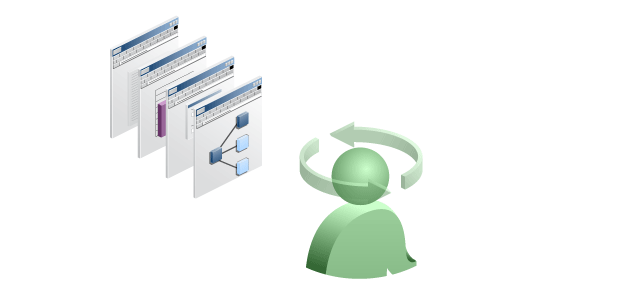
The Need
Since
the mid-1980s, computing technology has experienced at least two revolutions
and is moving into a third. The first revolution was represented by PCs
and client-server computing, replacing typewriters with word processors
and printers. Next, the Web made inter-office memos and paper-based information
obsolete with the instant availability of online information through e-mail
and on Web sites. Today, we are advancing through the third technology revolution,
commonly referred to as Service Oriented Architecture (SOA). Inflexible,
monolithic applications are transforming into composite, business-driven
solutions that quickly evolve with the rapidly changing requirements of
the organization. The technology must respond to the need to access multiple
applications, and also integrate content and other resources in applications.
This requires the convergence of application development architectures and
portal architectures. In addition, Web 2.0 technologies such as wikis, blogs,
tagging, linking, discussions, and RSS have made a dramatic impact on how
we work together.
Currently, bringing the benefits of individual Web 2.0 technologies into the workplace also means that users juggle many applications and tools to get their work done. There is no connection between these services, and the user is forced to remember how they all relate. Users need a way to bring it all together into one environment to streamline and simplify the way they work. IT needs an easy way to manage one centralized set of services and make them universally available to all the teams that require them. Today, each department installs their own wiki server or their own blogging engine, and IT is left to manage all the issues around compliance, archiving, aging out information, and integrating search across the different tools. Attempting to harness all the valuable information from these virtual islands to integrate it with enterprise application processes is no small task.
Currently, bringing the benefits of individual Web 2.0 technologies into the workplace also means that users juggle many applications and tools to get their work done. There is no connection between these services, and the user is forced to remember how they all relate. Users need a way to bring it all together into one environment to streamline and simplify the way they work. IT needs an easy way to manage one centralized set of services and make them universally available to all the teams that require them. Today, each department installs their own wiki server or their own blogging engine, and IT is left to manage all the issues around compliance, archiving, aging out information, and integrating search across the different tools. Attempting to harness all the valuable information from these virtual islands to integrate it with enterprise application processes is no small task.